Chile’s capital Santiago has a lot to offer, from architecture and museums to excellent food and a lively center.
Coming from Argentina, we expect Santiago to be kind of similar to the Argentine cities we have seen this trip. And yes, a central Plaza – Plaza de Armas -, surrounded by a cabildo – the old municipality – and a cathedral, and a wide avenue named after the local hero liberator, in this case Bernardo O’Higgins. A grid of one-way streets alternating direction, a pedestrian-only street in the town centre, a couple of early 20th Century buildings like a museum and a theatre, and a railway station or two. Ugly graffiti spoiling a lot of houses at ground level: all very much like a standard Argentine city. We even find an extreme left-wing restaurant, where earlier anti-government complots during the Pinochet years were hatched.
On the other hand, there are lots of differences, too. Santiago is much smaller scale than Buenos Aires, narrower streets, less traffic. A construction boom adds lots of apartment buildings in the suburbs, though, and the city is growing fast, now already some 6 million inhabitants. The people are less informally dressed than in Argentina, less shorts for men, less skimpy dresses and ultra-short shirts for the women. And, importantly, the food is different. Right, you can get your bife from the grill, but the left-wingers from our first evening served a delicious stew, and subsequent meals in the various markets were dominated by fish.
To start with the markets, there are two in the centre of town. The best-known is the Mercado Central, with predominantly fish stalls inside a huge metal structure dating from 1868. This is our first confrontation with Pacific fish, many of which we have never seen, and never heard of. Even my travel companion, who speaks a quite acceptable Spanish, often had no idea what the various names meant, so when we stared at the menu in one of the small restaurants inside the market building, we had no idea what we were ordering. But all very nice, one fish a bit dryer than the other. Plus, our first pisco sour, Chile’s (as well as Peru’s) national drink. We have committed ourselves to determine which one, the Chilean or the Peruvian, is the best, so I think we will have to have many more, just to ensure a fair assessment. Except that the next day, when we went to that other market, the Feria Municipal La Vega, across the Mapoche River than runs through town, the restaurant didn’t have an alcohol licence. But the food we had was even more spectacular, our first local ceviche – of which, unfortunately, we have no picture, as it looked so wonderful, that we spontaneously forgot until it was too late, ie finished. Ceviche is an originally Peruvian dish of raw fish, marinated and cured in lime or lemon juice and served with onions and spicy pepper. Absolutely delicious! We will be testing this one widely, too!
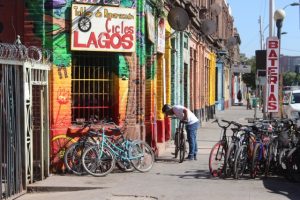
not all te buildings are very old, or very new: lowrise outside the centre, and a colourful bicycle shop
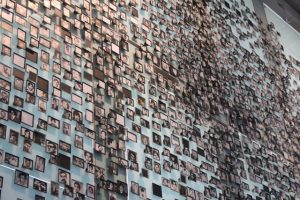
and this is a wholy different museum, Museo de la Memoria y Derechos Humanos, dedicated to the victims of the Pinochet era
But not all about Santiago is food- and drink-related. There is a lot to see, too, from old colonial buildings, including several palaces built for the rich and famous of the time, the excellent Museum of Pre-Colombian art – a reason in itself to come to Santiago -, and the tallest building in Latin America, the 300 meter high Gran Torre Santiago in a neighbourhood mockingly called ‘Sanhattan’.
For the best views we scale Cerro San Christobal, a 860 meter high peak not far away from the centre. Well, ‘scale’ is perhaps too much for the effort, which was limited to standing in line for a good half an hour with lots of other people, who intended to spend their Saturday afternoon not necessarily on the peak, but in the zoo, the botanical garden or the swimming pool, also located on the hill. The line, incidentally, was for the funicular: nobody in his right mind in Santiago is going to truly scale this hill at midday with 35 oC.
Closer to the ground, a few other things were also obvious. Although the city looks very affluent, and Chile seems to do well economically, there are lots of people who are less lucky. They sleep on the benches of the parks, or have put their matrass on the street, and not because it is so warm at night. Everywhere, but especially near the busier locations, like metro stations, spontaneous street markets erupt during rush hour, with people selling second hand clothes, or old books, or anything really, from a blanket spread out on the pavement. And what is it, that the whole city stinks pee? This cannot be only from those homeless, from the beggars, this is much more pervasive. Or is this something Chilean? – I already know that Santiago is not the only Chilean city suffering from this phenomenon.
In the evening we retreat to our little apartment that we rent, on the 25th floor of a building just off the main traffic artery, the Avenida del Libertador General Bernardo O’Higgins – even the most chauvinistic Chileans call it Alameda, much shorter and originally referring to a tree-lined shady avenue for strolling, which it definitely isn’t anymore. From where we also have a beautiful view over the city. When we moved in, we joked to the owner that we shouldn’t have an earthquake here, so high up. To which he ensured us that the building was earthquake-proof. It was, although we did feel a little nervous, when the whole building shook for almost a minute, at 10 at night. In response to an earthquake, near La Serena, 6.7 on the Richter scale and luckily far enough away not to really put the building to the test. In any case, we are moving out tomorrow.
To Valparaiso
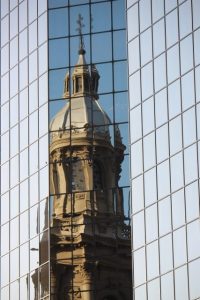
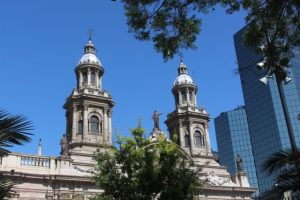
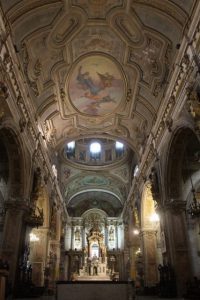



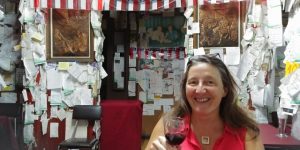


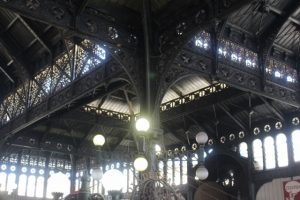
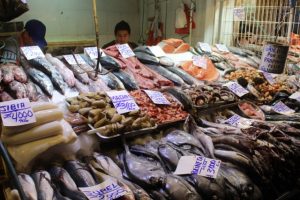





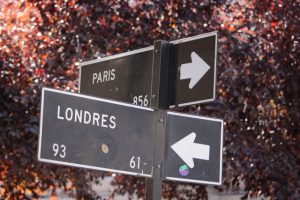



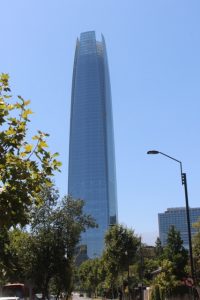
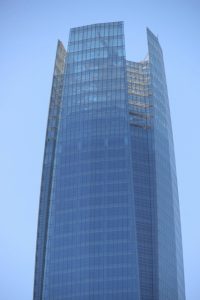
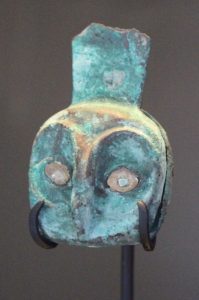


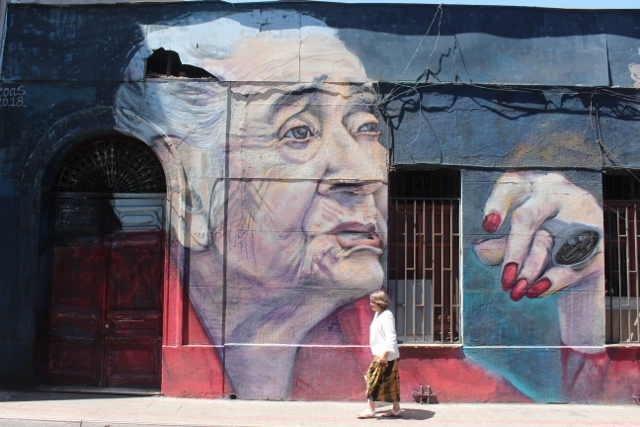


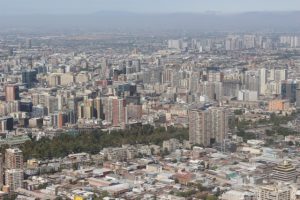
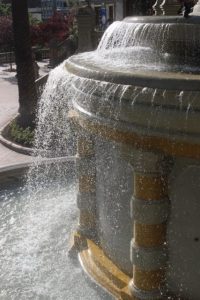
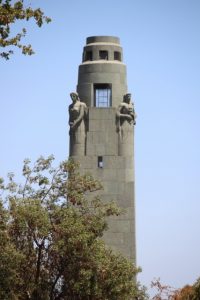












Who is that man with the small beard??????
tja, Thea, je wat om in een links extremistisch millieu te infiltreren…